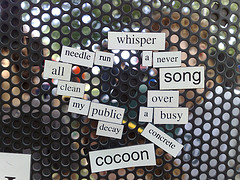Interesting from Joshua Benton at Nieman Lab on giving reporters the implicit permission to write briefly.
So I like the idea of giving journalists a structure and permission to share little things — things that don’t need to be expanded into traditional articles, things that can connect a reporter’s knowledge to an audience’s interest without the templatized exoskeleton of modern web publishing.
It’s something I’d like to do more of here – sharing interesting links with a paragraph or two’s analysis. Not everything needs to be short enough to be a tweet or long enough to be a full article. Aside from the issues about it taking all the useful “byproducts” of reporting, as Benton argues, Twitter is a terrible medium for archiving, and not a great one for conversation; if either of those things are important in how you share little things, there are far better options for doing so. Tumblr, for instance.
Conceptualising CMS shortcomings as a “lack of permission” is particularly interesting – reminds me of poetics conversations around line length and form being limited by the size of the notebook or the eventual printed page. Form and content are still married. You can see that too in how hard it is for many news organisations to put up a story that consists only of a single fact. How do you break a single-sentence story in a traditional CMS where headline, intro and article must all say something?
